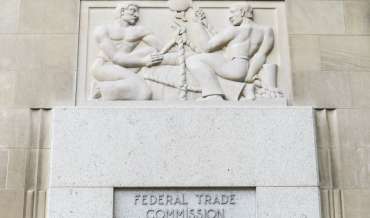Telemarketers must often navigate a minefield of risks. The Telephone Consumer Protection Act (TCPA), Telemarketing Sales Rule (TSR), various Do Not Call (DNC) laws, and other regulatory statutes present a vast array of potential, costly violations.
Ah, but you may be saying, “I only take inbound calls and all of these regulations apply to outbound calling. I don’t need to worry about this stuff.”
That’s incorrect.
Inbound call centers still must abide by telemarketing regulations. However, because of the nature of the business, they face a unique assortment of risks.
Much of the regulatory structure governing telemarketing focuses on outbound calling. But that does not make inbound calling centers immune to the risks of violating the TCPA, TSR, DNC list, or other statutes. The risks we will discuss here demonstrate the need for inbound calling centers to have their own unique compliance procedures in order to limit their exposure to these risks.
Risks
The most serious risks that inbound call centers should consider can be sorted into the following five categories:
1. Call Backs
While many call centers have business models based on taking incoming calls rather than making outgoing calls, it is unlikely that any business is 100% inbound-only. For example, many inbound call centers have circumstances where employees take a call from a consumer and later need to call that consumer back—perhaps because of a dropped call or even at the explicit direction of the consumer. Those callbacks are considered outbound calls and, thus, are subject to the same TCPA and DNC regulations as any other outbound call.
2. Established Business Relationships
Another circumstance in which inbound-based call centers may make outbound calls relates to Established Business Relationships (EBRs). An inbound call center could have several reasons to make outbound calls to their existing customers, such as responding to service issues or clearing up problems with billing or payment. Generally, these sorts of calls are protected by EBR exemptions in telemarketing regulations. But EBR exemptions often have expiration dates that need to be carefully tracked.
3. Litigators
Litigators have a bevy of tricks and traps for ensnaring unsuspecting telemarketers into expensive lawsuits and class actions. Oftentimes they will begin by trying to infiltrate marketing campaigns. And even if a litigator calls an inbound call center, they are still dangerous. Inbound telemarketers should make every effort to insulate themselves from litigators.
4. Lead Generators
Many inbound call centers hire lead generators to direct consumers to them. As with any business model that employs lead generators, this raises the possibility of vicarious liability. Lead generators could be sending live callers to the call center or potentially even making outbound calls themselves, without telling their inbound-based client. Any inbound call center that employs outside companies to generate leads should have compliance strategies that take potential vicarious liability issues into account.
5. Telemarketing Sales Rule
The TSR has regulations that apply specifically to certain kinds of inbound calls. According to the Federal Trade Commission’s (FTC) website, “the TSR does cover calls from consumers in response to general media advertisements relating to: franchises not covered by the FTC’s Franchise Rule, business opportunities not covered by the FTC’s Business Opportunity Rule, credit card loss protection, credit repair, recovery services, advance-fee loans, investment opportunities, or debt relief services.” The TSR also has prohibitions on certain payment methods that apply to inbound calls. Namely, it prohibits inbound telemarketers from using “remotely created payment orders or checks, or accept[ing] cash-to-cash money transfers or cash reload mechanisms.” Finally, the TSR has disclosure requirements from inbound telemarketers who make upsells, with different requirements for internal and external upselling. In circumstances where an inbound telemarketer makes an upsell to a consumer, the call in which they make the upsell should be treated as an outbound call in many respects.
Did You Know?
States which require telemarketing licensing— approximately 75% of states with state-specific telemarketing laws— require it for inbound telemarketers as well as outbound.
Best Practices
Scrub for Litigators on Inbound and Outbound Calls
The easiest way to avoid a lawsuit is to not contact or allow yourself to be contacted by the people who are most likely to sue. TCPA litigators and professional plaintiffs infiltrate your data and find ways to get independent agents to contact them. The best defense is to remove these predatory individuals from all calling lists before they can reach you.
Suppress Numbers Against the Do Not Call List
Telemarketers are required to suppress phone numbers on the National Do Not Call Registry. Some states have their own local DNC lists as in addition to the federal list. Even inbound call centers should suppress numbers against these lists in order to be covered for potential callbacks.
Maintain an Internal Do Not Call List & Policy
You are required by law to keep a company-specific Do Not Call list and honor all opt-outs and consent revocations. You are also required by law to keep an updated, written, internal Do Not Call Policy and must provide such policy to your customers and call recipients upon request. This is an important policy for inbound-based call centers as well as outbound call centers.
Maintain and Track Your Established Business Relationships
Keeping track of your EBRs—when they were established, when they expire—is an essential operation for inbound call centers. Many of the situations in which inbound-based call centers make outbound calls relate to EBRs so make sure you are properly operating within the EBR exemptions.
For more information on the Top 5 Risks for Inbound Call Centers, click here to download a free guide.





